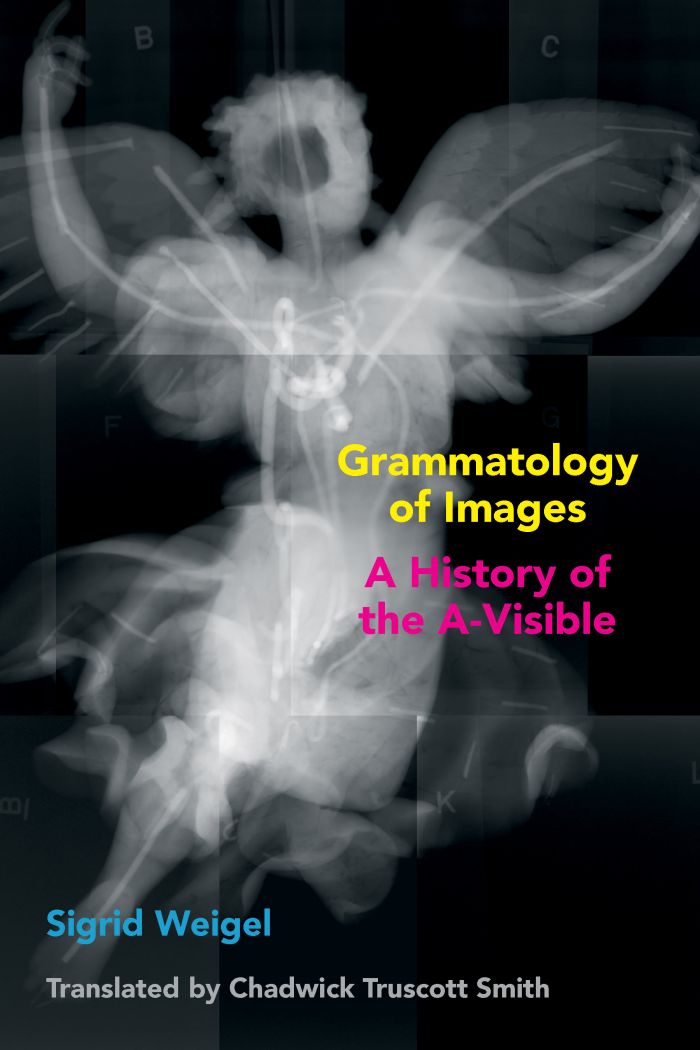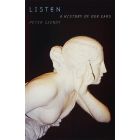Grammatology of Images
A History of the A-Visible

This book can be opened with

Grammatology of Images radically alters how we approach images. Instead of asking for the history, power, or essence of images, Sigrid Weigel addresses imaging as such. The book considers how something a-visible gets transformed into an image. Weigel scrutinizes the moment of mis-en-apparition, of making an appearance, and the process of concealment that accompanies any imaging.
Weigel reinterprets Derrida’s and Freud’s concept of the trace as that which must be thought before something exists. In doing so, she illuminates the threshold between traces and iconic images, between something immaterial and its pictorial representation. Chapters alternate between general accounts of the line, the index, the effigy, and the cult-image, and case studies from the history of science, art, politics, and religion, involving faces as indicators of emotion, caricatures as effigies of defamation, and angels as embodiments of transcendental ideas.
Weigel’s approach to images illuminates fascinating, unexpected correspondences between premodern and contemporary image-practices, between the history of religion and the modern sciences, and between things that are and are not understood as art.
What do a video of a burning American flag, an MRI of the brain, and Raphael’s Madonna have in common? With stunning breath and erudition, Weigel concretizes what Derrida only suspected, completes what Benjamin was unable to finish, and clarifies what mystified Warburg—revealing the powerful forces hidden at the singular point of culture, which turn cyphers into images, from the banal to the most sacred.—Jimena Canales, author of Bedeviled: A Shadow History of Demons in Science
Sigrid Weigel has provided a masterful overview of the infinite variety of image-practices, from the most primitive forms of mark-making, to effigies and monuments, to the dematerialized images of ghosts, angels, and memories, to screen culture and cultural icons. This authoritative volume will be essential to students of iconology, art history, and visual culture who will enjoy its wide range and original insights.—W. J. T. Mitchell, author of What Do Pictures Want?
Sigrid Weigel is former director of Zentrum für Literatur-und Kulturforschung in Berlin and has taught at numerous universities in the United States and elsewhere around the world. She has published on literature, philosophy, cultural history, image theory, memory, secularization, genealogy, and the cultural history of sciences across numerous books in German and English, including Walter Benjamin: Images, the Creaturely, and the Holy (Stanford, 2013).
Note to the English-Language Edition | vii
List of Figures | ix
Introduction: Toward a Grammatology of Images | 1
1 The Trace and the Current Revaluation of Lines | 15
2 Faces: Between Trace and Image, Encoding and Measurement | 43
3 Indexical Images: Trace, Resemblance, and Code | 84
4 Effigiēs: Double, Representation, and the Supplementary Economy of the Likeness (Ebenbild) | 101
5 Defamatory Images: Disfiguration in Physiognomy and Caricature’s Two Bodies | 118
6 Cult Images: Iconoclastic Controversy, the Desire for Images, and the Dialectic of Secularization | 170
7 Angels: Images of Making-Appearance between Religion, Art, and Science | 202
8 Perspectives of the Grammatology of Images beyond Visual Culture | 264
Notes | 275
Bibliography | 319
Index | 347







